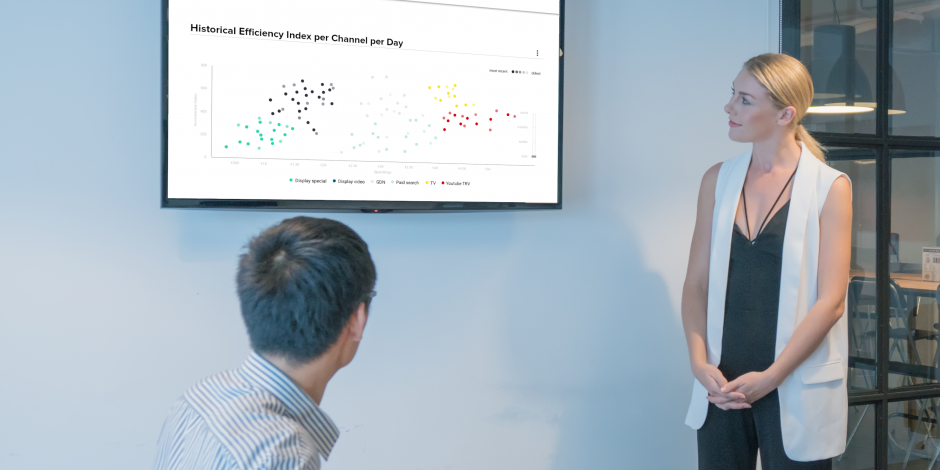This article was originally published on The Drum on March 16, 2020.
With the end of cookie-based user journey tracking looming on the horizon, interest in marketing theory and methods from the pre-attribution era is on the rise again.
This is bad news for the many ad tech providers who rely on cookie-based data, but good news for the marketing industry. After ten years of steady hype, attribution modelling, including multi-touch attribution, has never proven to be the sure-fire way of increasing marketing effectiveness it promised to be. It is this increasingly widespread realization that got the stone rolling in the first place. Tightening GDPR cookie consent regulations and Google’s announcement of plans to kill third-party cookies by 2020 are only accelerating their decline. A few months ago, Adidas stated that its attribution models tended to produce erroneous results such as suggesting that performance advertising is the principle driver of e-commerce sales. Through econometrics, Adidas eventually discovered that the role of video and other brand-centered activities had been vastly underestimated.
Ironically, what was once purported to be the core benefit of attribution models – the individual customer journey tracking – now turns out to be their pitfall. Apart from legitimate questions about privacy (harming the industry’s reputation in the process), using person-level data can be a misleading basis for making marketing decisions. This is especially true for industries like automotive and CPG, in which decision-making is complex, brand equity plays a key role and offline channels account for a majority of sales.
Single-user tracking can distract from the big picture
In contrast, individual journeys have never played any role in the econometric methods such as marketing mix modelling, which are now experiencing a major comeback. They are all about producing generalisable answers from generalised data and creating a time series that clearly links marketing activities to sales. Done right, marketing mix modelling provides an accurate estimation of the real impact of past and future marketing activities.
Of course, marketing mix modeling faces limitations of its own. First of all, it is expensive and very time-consuming. Moreover, to be accurate, it needs at least two years of historical data. This explains why even many big companies can only afford to conduct marketing mix modelling in two- to three-year intervals. Perhaps most disadvantageously, however, classical marketing mix models have no real-time relevance. For instance, marketers may discover through marketing mix modelling that one channel is underperforming, so they will lower investments and shift budgets to better-performing channels. But the actual effects of these actions are obscure until the next round of marketing mix modelling is completed, which can be several years later. Accordingly, companies are not able to amend their course of action on an ongoing basis, making the method unsuitable for steering purposes. Moreover, the effect of activations and channels with comparably little invest – which disproportionally includes digital activations – is very hard to measure. In a nutshell, traditional marketing mix models are unfit to benefit from the real-time availability of digital data and the newly won ability to optimize activations on short notice.
The best of both Worlds: Towards Marketing Effect Modelling
Marketing mix modelling as we know it has existed for at least 30 years. Innovative thinking and contemporary technology can fix many of its problems. Based on this premise, we created the marketing effect modelling approach, which we regard to be the next step in combining the bird’s eye view of marketing mix models with the real-time, behavior-based nature of digital data. The idea is simple enough: To the standard linear regression analysis, which establishes a historical baseline, we add the component of live metrics.
First, data that is available on a daily basis and derived from the company’s KPI’s are added to the mix. Virtually anything that fits the bill can be incorporated, from Google searches to store visits or even the number of calls arriving at a call center. The model then uses machine learning algorithms to fill the existing data gaps by enhancing the daily values with predicted hourly values. This way, we obtain live metrics that have proved to be highly accurate in our work with leading FMCG clients. As a result, what we get is essentially a continuous, real-time system that delivers all the benefits of marketing mix modelling without its drawbacks. Moreover, digital metrics allow us to measure organic consumer interest in brands, products and campaigns, factors that are often neglected when analyzing media effectiveness. Ultimately, paid media investments are only a small part of the equation, and digital metrics can improve our understanding of many other contributing factors, including brand strength and external consumer trends.

For the first time, marketers are able to track their marketing ROI in real-time and across channels without having to rely on personal-level data. The ability to continuously monitor how well a channel is performing saves cost on advertising that doesn’t deliver value and maximizes the impact of the invested budgets.
Exciting times for the industry
Econometrics also brings with itself a shift in focus towards marketing theory once again, the good old 4Ps. As Drum reporters McCarthy and Blustein point out, we are going to see “a return to brand awareness and direct response campaigns” as well as “to the traditional cornerstones of advertising where every movement and action of the consumer isn’t attributed to a single ad.” This is good news – both for the marketing industry, large advertisers and the consumers.
Given the benefits, we expect to see a proliferation of similar approaches building upon classic marketing mix modelling with new technologies in the coming years. Over time, they will become more affordable for small and medium-sized businesses too. It will be interesting to see how not only media planners, but also strategists and creative planners make use of these new opportunities.
BACK TO ALL ARTICLES
